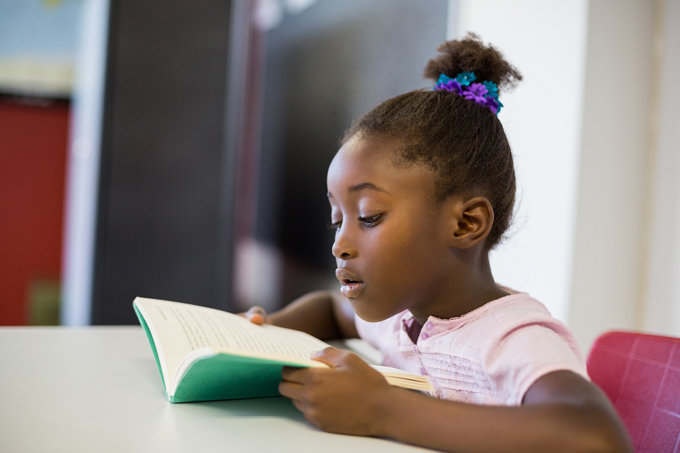
ILA’s Children’s Rights to Read gives me teacher goosebumps. And this is why:
Children walk into our classrooms with all of themselves. They are the sum of their experiences and their expectations. We cannot ask them to leave any part of themselves at the door when the bell rings. Rather, we must embrace their entirety.
So, how can we do this as reading teachers?
We can carve out time every day for them to read (Right 1). And not just time, but a high volume of uninterrupted time (Right 7). We can curate a classroom library from which they are free to browse and select titles (Right 2).
We can reveal to them what to watch for in the books they choose so they can deepen their comprehension, better understand the content, and have their own thoughts and interpretations about what they read. Comprehension helps make the reading experience enjoyable and fully realized (Right 5).
As reading teachers, we know how important it is to do more than focus on the book; we have to focus on our readers. We talk to our students, we seek to understand them and their interests, passions, and reading histories. We make sure our classroom and school libraries are not only a mirror of their lives and identities, but also a window into parts of the world they have not yet ventured (Rights 3 and 4).
Reading is social and thus we must give students the chance to recommend titles, react to their reading by talking with friends, and talk about how they’re living differently because of the things they have read (Right 8).
When students talk to us, they should know that we are helping them read any book better, not just the one book they have in their hands in the moment we confer with them (Right 6). Speaking of conferring, we must give students our individual time and attention as we guide them toward stronger reading habits and skills.
And what is the point of reading anyway, unless it’s enjoyable? Reading helps us learn about our world so we can cultivate new thinking and share our ideas and opinions with others (Right 9). When we invest in developing our own knowledge around texts and engage as regular readers of children’s literature, we are better able to teach in a way that is generalizable book to book (Right 10).
When our teaching is specific, clear, and transferrable, we can ensure that we are supporting our students’ reading lives well beyond the precious days we work with them in our classrooms. When we honor our students’ reading lives and tailor our instruction to meet them where they are, we are preserving not only their rights to read but also their right to lay claim to the world around them.
The Children’s Rights to Read initiative, launched by ILA to ensure every child has access to the education, opportunities and resources needed to read, focuses on 10 rights essential for individuals to reach full personal, social and educational potential. The global campaign asserts and affirms ILA’s commitment to its mission of literacy for all and offers a framework for partnerships and action. To learn more and sign the pledge to support the Rights, visit literacyworldwide.org/rightstoread.
Jennifer Serravallo is a literacy consultant, speaker, and the author of several popular titles including The New York Times bestselling The Reading Strategies Book: Your Everything Guide to Developing Skilled Readers (Heinemann) and The Writing Strategies Book: Your Everything Guide to Developing Skilled Writers (Heinemann). Her latest publication, Understanding Texts & Readers: Responsive Comprehension Instruction with Leveled Texts (Heinemann), connects comprehension goals to text levels and readers responses. Upcoming publications include A Teacher's Guide to Reading Conferences(early 2019) and Complete Comprehension, which is a revised and reimagined whole book assessment and teaching resource based on the award-winning Independent Reading Assessment (due in spring 2019). She was a senior staff developer at the Teachers College Reading and Writing Project and taught in Title I schools in New York City. Tweet her @jserravallo.